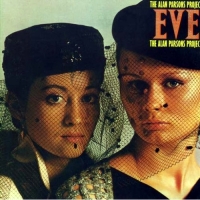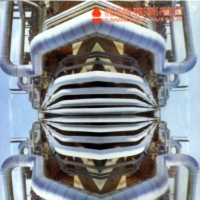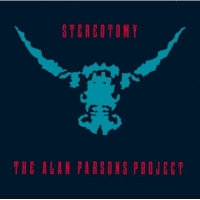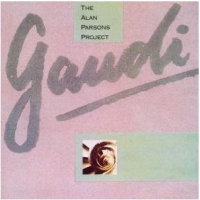Alan Parsons Project – Six expanded editions reviewed
Eric Woolfson and Alan Parsons, the musical genius duo behind the pop symphonic progressive Alan Parsons Project, once referred to the creative journey of producing an album as “not unlike throwing a lump of clay on a potter’s wheel and then shaping and reshaping the material in an infinite number of times until the potter is satisfied.” As Arista Albums continues to dredge up older albums of Parsons and other artists and remaster them for its Legacy series, there are some pretty impressive lumps of clay turning up.
Indeed, on Jan. 27, Arista released six new and expanded editions of Alan Parsons Project albums, including Pyramid (1978), Eve (1979), Turn of a Friendly Card (1980), Ammonia Avenue (1984), Stereotomy (1986) and the final APP album, Gaudi (1987). I Robot (1977) and Eye in the Sky (1982) have already been given expanded-edition treatment, leaving only the first album, Tales of Mystery and Imagination (1976) and Vulture Culture (1985) unturned in this particular series. But Tales of Mystery and Imagination has already been mined, with a remastered, remixed edition released in 2007, as was Vulture Culture (remastered and re-released with bonus tracks) the same year.
While each album in this new batch has been carefully remastered, it is not specifically the album that is newsworthy. Each of these six APP albums and the work on them speak for themselves – particularly the breakthrough Turn of a Friendly Card and standouts Ammonia Avenue and Stereotomy (APP’s first digitally produced album). The real gems (and a few clunkers) are found in the 40 bonus tracks contained on the albums. These are some of the lumps of clay from which Parsons’ pots were crafted. Indeed, only an artist knows when he or she is finished with a piece, and there is an infinite number of other ways any project could be put together from the components created to mix the final version. Some of the bonus cuts are nearly strong enough to stand on their own, while others really are of interest only from a hypothetical or intellectual point of view. Sound quality is variable (as you would expect from cuttings), ranging from extremely nice to sounding as though recorded through a tin can. While a few are cuts that only a true Parsons fan could love, there are several that are quite impressive. Others, such as separated backing tracks, are very interesting and most definitely help tell the story of the development of the APP and how it created its magic. Others are preliminaries or demos for cuts that exist on the basic albums. In addition, each album contains extensive and interesting liner notes, as well as commentary on the bonus cuts by both Parsons and Woolfson.
When Parsons and Woolfson first met in the canteen of Abbey Road Studios during 1974, Parsons had already distinguished himself as a highly creative audio engineer. He had assisted in the engineering of the Beatles’ Abbey Road and Let It Be albums and had engineered Pink Floyd’s Dark Side of the Moon album, which – even then – was already becoming an instant classic. Woolfson, who was a songwriter/composer, was working as a session pianist and had begun managing the careers of several successful musicians. He also had written songs for a number of artists of the day, including Frank Ifield, Marianne Faithfull, 10CC and others. But he had an idea for a concept album that utilized the writings of horror master Edgar Allan Poe. The two collaborated and the rest – as they say – is history. The two produced a total of 10 albums from 1976-87, each with its own theme, clever lyrics and impressive orchestration.
As the Project grew and developed, so did a loose collective of highly skilled musicians who were mostly vocalists and various session players, some who were relatively well known, but none who were out of reach, including Colin Blunstone, Steve Harley, Allan Clarke, Clare Torry (who essentially was responsible for creating Pink Floyd’s “Great Gig in the Sky”) and others, including vocalist Chris Rainbow, whose background haunting vocal harmonies appear in a number of APP songs. Some artists appeared only once or twice on Parsons albums, while others, such as drummer Stuart Tosh, were around for most of the albums. Both Parsons and Woolfson contributed both vocal and instrumental performances.
Following are very brief synopses of interesting points about each of these albums, along with bonus cuts that make these remasters worth the price of admission. Not all are featured – just the prime cuts.
Pyramid
During the late 1970s, when the idea for this album was hatched, culture was firmly gripped in the talons of pyramid frenzy, primarily because of quasi-science author G. Patrick Flanagan (Pyramid Power: The Millenium Science) and the supposed mystical powers afforded by their use as icons or talisman. Pyramids were thought by many to do everything, from increasing personal energy flow and sharpening razor blades to preserving and improving the nutritional quality of food (as well as make plants grow faster). A press release for the original album called Pyramid “a look at yesterday through the eyes of today,” a strong bit of over-trivializing the album and its music. There are a number of references to pyramids on the album, especially in Pyramania,” which was written with tongue planted firmly in cheek!
Bonus cuts worth the price of admission:
“What Goes Up” (early demo, 2 versions). This is an instrumental version that showcases much of the background instrumental sound to its best advantage. A second track also includes a rather nice little piece called “Little Voice” that was never used. “Hyper-Gamma-Spaces” (demo). An early version of this instrumental, which is already reminiscent of “The Raven” from Tales of Mystery and Imagination is even more so here.
Eve
As originally conceived, “Eve” was to be a tribute to famous historical women, such as Joan of Arc and others. Due to time constraints, however, the work became generalized and eventually just about women in general and their strengths. It’s a bit ironic and not entirely coincidental that the two primary hits from this album are “Lucifer” and Damned if I Do.” “Lucifer” became the first APP #1 single and the source of a great deal of pride by Parsons, who both wrote and produced it.
Bonus cuts worth the price of admission:
Head-and-shoulders above the seven bonus tracks on Eve are the two additional versions of “Lucifer” (a demo and an early rough mix). The first-ever demo (somewhat variable sound quality, since it was recorded at home) allows one to hear clearly parts that aren’t as apparent in the finished version. The other rough mix is just plain cool, with a prominent Morse code buzzer providing rhythm (appropriately spelling out E V E).
Also of interest is “Elsie’s Theme” from The Sicilian Defense, an album recorded about the same time as Eve, but was permanently shelved. “Elsie’s Theme” is an absolutely beautiful piano piece that was never originally titled, but received its moniker in honor of Woolfson’s new niece.
The rough mix of a longer “If I Could Change Your Mind” has a wonderful brass finish that was faded out of the released version. It’s nice.
Turn of a Friendly Card
Parsons and Woolfson were both living in Monaco while working on Turn of a Friendly Card and had the firsthand opportunity to see the pleasures and pain inflicted by high-roller gambling. The resulting album ranks among the most cohesive concept albums ever produced. Some of the opening sounds in “Snake Eyes” were even recorded by Parsons on a cassette recorder in a Monte Carlo casino.
Bonus cuts worth the price of admission:
Of the eight bonus tracks on this album, three versions of “Nothing Left to Lose” (basic backing track, Chris Rainbow backing vocals and an early studio version) are found as bonus tracks make for some interesting listening in understanding how a piece comes together. But Chris Rainbow’s overdubbed vocal compilation is harmony that nearly is heartstopping! “The Gold Bug” (demo), another Edgar Allan Poe-inspired piece, was right at home on Turn of a Friendly Card. This early demo’s sound quality is not wonderful, but gives quite an interesting take on the final version (sans-sax).
Ammonia Avenue
Ammonia Avenue is perhaps the hardest APP album to decipher in terms of a continuous concept. Its tracks, including “Prime Time,” “Don’t Answer Me,” “Dancing on a Highwire” and “Since The Last Goodbye” hardly seem to go together smoothly, philosophically or otherwise. Even today, Parsons will say only that “it’s about a petro-chemical plant in the North of England.” Yet the album remains one of the most successful APP albums in sales, and features some of the most radio-friendly songs APP ever produced. Woolfson states that the plant was in Billingham, and that there was an avenue, “but with no trees or people, just pipes where they make ammonia.” Amazingly, what could easily have become a heavy-handed and depressing concept left listeners with some mighty upbeat music.
Bonus cuts worth the price of admission:
“Since The Last Goodbye” (Chris Rainbow overdubs). Again, Chris Rainbow’s vocal overdubbed harmonies take the prize of those bonus cuts that demand highlighting from the remastered Ammonia Avenue. It’s just plain pleasant to listen to. It leads into a longer rough version of the song.
“You Don’t Believe” (instrumental tribute to The Shadows). This unusual instrumental has a definite western twang about it in the opening and moves on with other recognizable styles as an instrumental tribute to The Shadows group.
“Dancing on a Highwire/Spotlight” (work in progress). Recorded before the lyrics were finished, this largely synthesizer and guitar piece is punctuated by “Dah Dee Dah Dum” vocals (the equivalent of Latin or Greek filler in print), experiments with various sounds and keys.
“Ammonia Avenue” (demo vocal and orchestral overdub). Again, showing two very different facets of the crafting of a very complex piece, both bonus cuts complement each other quite well. The orchestral overdub is by far more dramatic, but very short.
Stereotomy
According to Webster’s unabridged dictionary, stereotomy refers to “the science or art of cutting solids into certain figures or sections, as arches, and the like; especially, the art of stonecutting. Stereotomy also is the second-to-last APP album and does have a tie to the Project’s first album. Woolfson initially encountered the word in Poe’s “Murders in the rue Morgue” and felt it had great musical application. Thematically and musically, the album uses the word as a metaphor for the slicing, dicing and shaping of celebrity by pop culture.
Bonus cuts worth the price of admission:
“Light of the World” backing track instrumental. This was a well-developed piece long before vocals were ever added and could have made quite a nice instrumental release on its own.
“Rumour Goin’ Round” This is included as an unreleased demo, recorded at a time when Woolfson had not yet finished the lyrics. No matter. The extremely strong guitar contrasts nicely with the “doo doo doo” voice placement for lyrics to come – and never did. Both bonus versions of “Stereotomy,” Woolfson guide vocal and demo backing, are strong pieces worth listening to, but there is no second guessing as to whether the released version is the finest clay pot on the shelf.
Gaudi
This was an entire concept album themed around the 19th-century Spanish architect, Antonio Gaudi, who was responsible for the Sagrada Familia (the Holy Family) in Barcelona, an 18-towered basilica (12 for the Apostles, for four the evangelists, one for Mary and one for Jesus), which is still under construction and is set for completion in 2026. The album, thankfully, took a lot less time to put together! Even though each track can stand on its own merit, each feeds into the larger thread of the concept. That thread (both to its advantage and disadvantage is fairly transparent to those knowing little about the architect. However, like, all other APP albums, the music speaks for itself.
Bonus cuts worth the price of admission:
“Too Late” (Woolfson rough guide vocal). As with many rough guides, Woolfson recorded pieces before finishing the lyrics. In this case the vocals consist almost entirely of “La La Las.” This version also features an introduction that discarded from the final version.
“Standing on Higher Ground” (vocal experiments). This is a rather nice experimentation piece, where two songs (“Higher Ground” and Losing Proposition”) were combined into one. Woolfson was attempting to intertwine different themes, much as Gaudi did, but was apparently not satisfied with the result. “Losing Proposition” was lost from the final version…and it was a loss.
As Arista/Legacy continues to dust off and rescue more material from the vaults, it’s clear that there are many gems yet to be discovered – despite the already relatively heavy mining of Parsons material. The musical quality of these six albums and the bonus material found on each can easily be considered a service to the listener.
– Wayne L. Youngblood







Awesome Review! I’ve checked out most of the bonus material on the dusted off albums and it really does give a sneak peek into the creative process that went in to the making of the songs that compose these albums… very interesting!
Even if they didn’t include these little pockets of unreleased material, the sound quality of these alone would be enough of a reason to get these and obsessively listen to them consecutively.
Kudos!